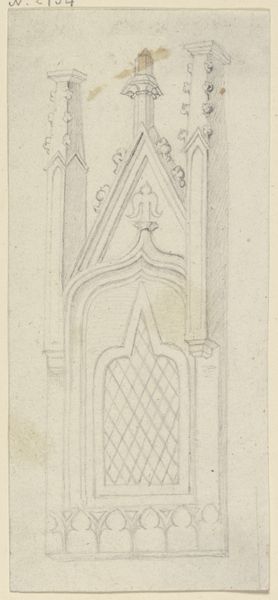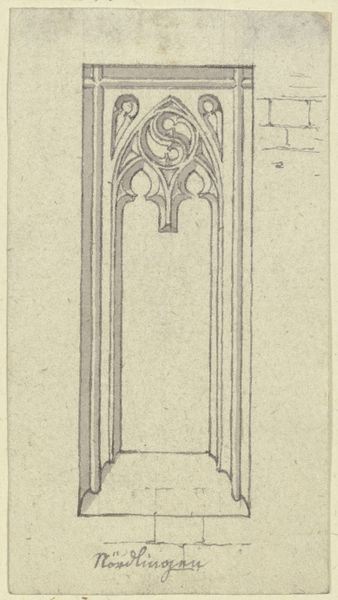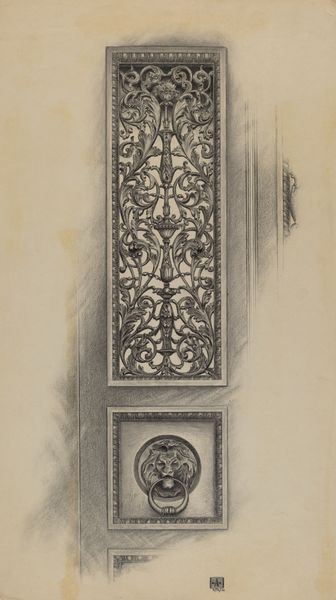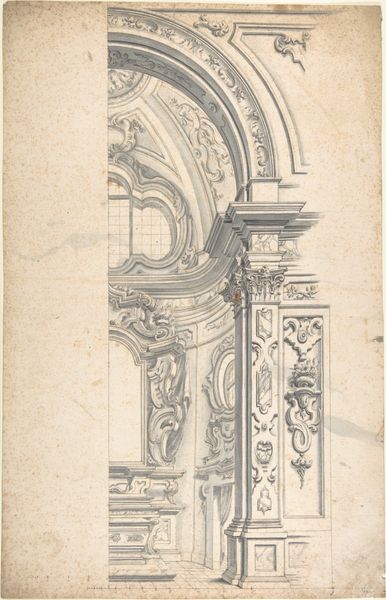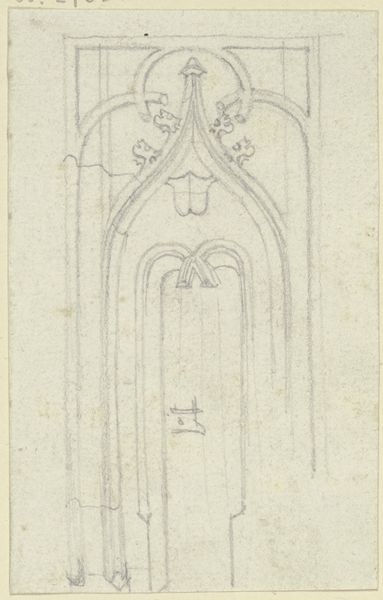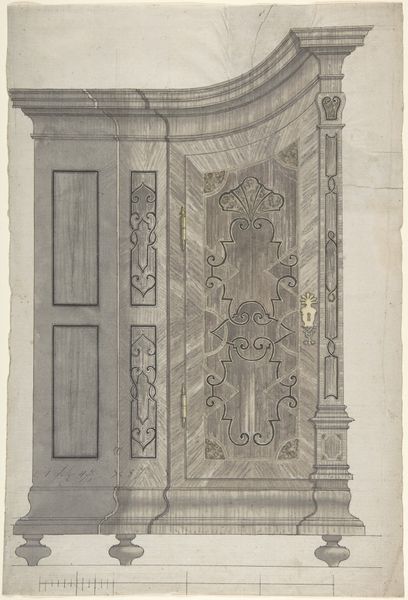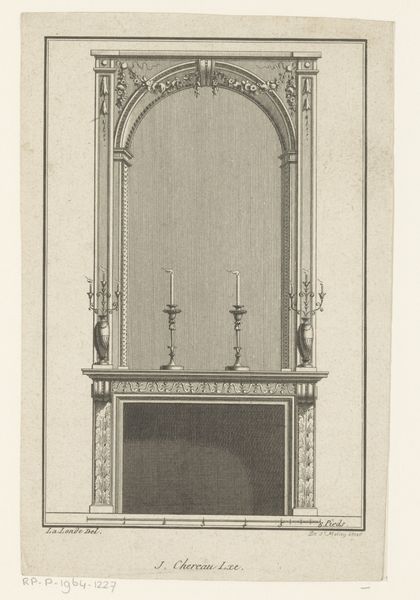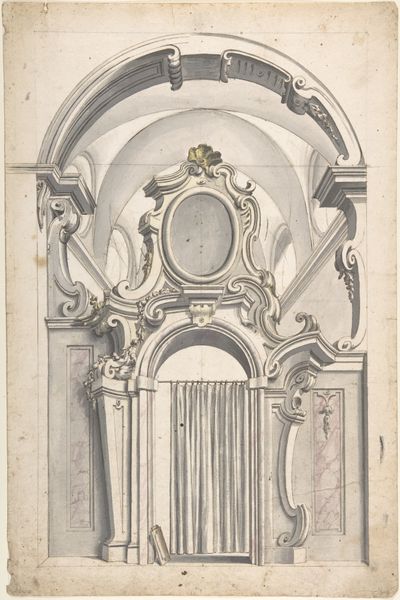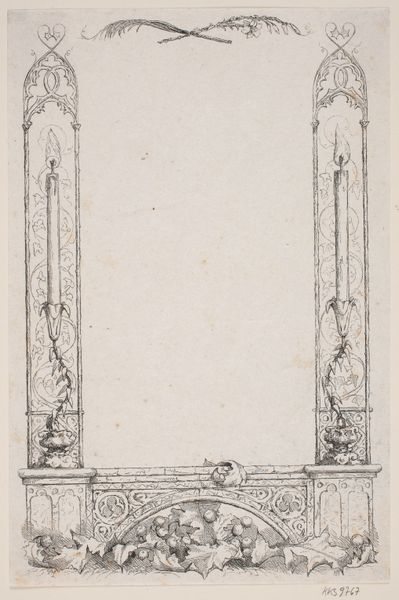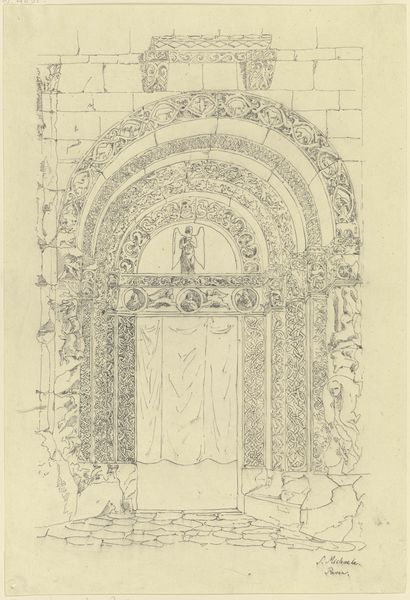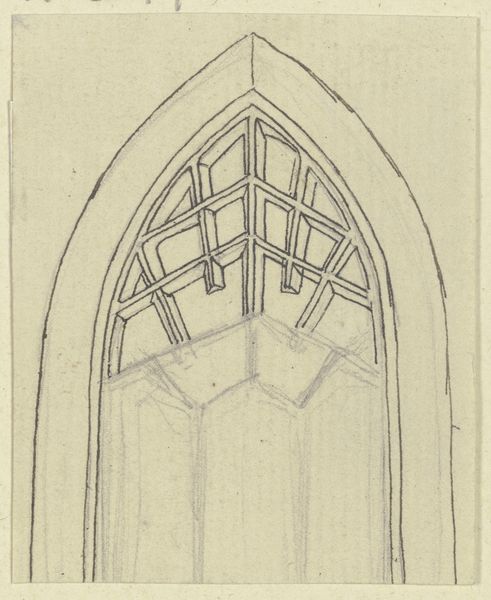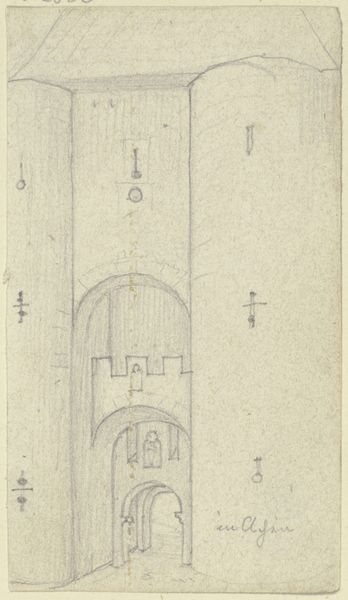
Dimensions: sheet: 3 3/4 x 2 5/16 in. (9.6 x 5.8 cm)
Copyright: Public Domain
Curator: Here we have a "Metal Keyplate for Church," likely dating from the mid to late 19th century, part of the Metropolitan Museum's collection. Editor: It strikes me as intensely…institutional. Pale blues and greys, austere Gothic tracery. The emphasis on controlled access with the keyplate looming front and center – there’s something cold about its intended purpose and aesthetic, the drawing looks quite unfinished in the inner details too, as if not everything is open to analysis. Curator: It’s fascinating to consider the context of these keyplates in 19th-century ecclesiastical architecture. The Gothic Revival was in full swing, and such detailed metalwork served not only a functional purpose but also aimed to evoke the authority and historical continuity of the Church. They became almost symbolic of its strength in the public space. Editor: The drawing feels inherently bound to socio-economic hierarchy. Those ornamental details and stylized flourishes of the gothic period scream exclusivity. I’m intrigued to understand for whose benefit this key plate design would truly serve - the community or solely the religious authorities controlling access? It brings into question the very idea of who these structures welcomed. Curator: Indeed, these architectural elements are always making an appeal to public authority. It invites examination into church authority's image management. There's clearly intent in its aesthetic language - those stylized fleur-de-lis aren’t just pretty; they're deliberate nods to the perceived legitimacy of those in charge. The church wished to maintain the importance it wielded. Editor: And how does access to the divine get controlled and mediated? This drawing provides a means of controlling who does and doesn't step into these inner realms. Were women, lower classes, and non-conformists similarly restricted? Curator: What I appreciate about examining this work is how it prompts questions beyond just style, extending to the practical application of faith institutions. Its aesthetic reflects its intended public facing. Editor: Looking at it from this angle allows us to rethink who gets access, who builds and creates the space, and whose stories it is designed to celebrate, or to lock away in the process. The artwork feels like an emblem of subtle yet persistent socio-cultural control.
Comments
No comments
Be the first to comment and join the conversation on the ultimate creative platform.
